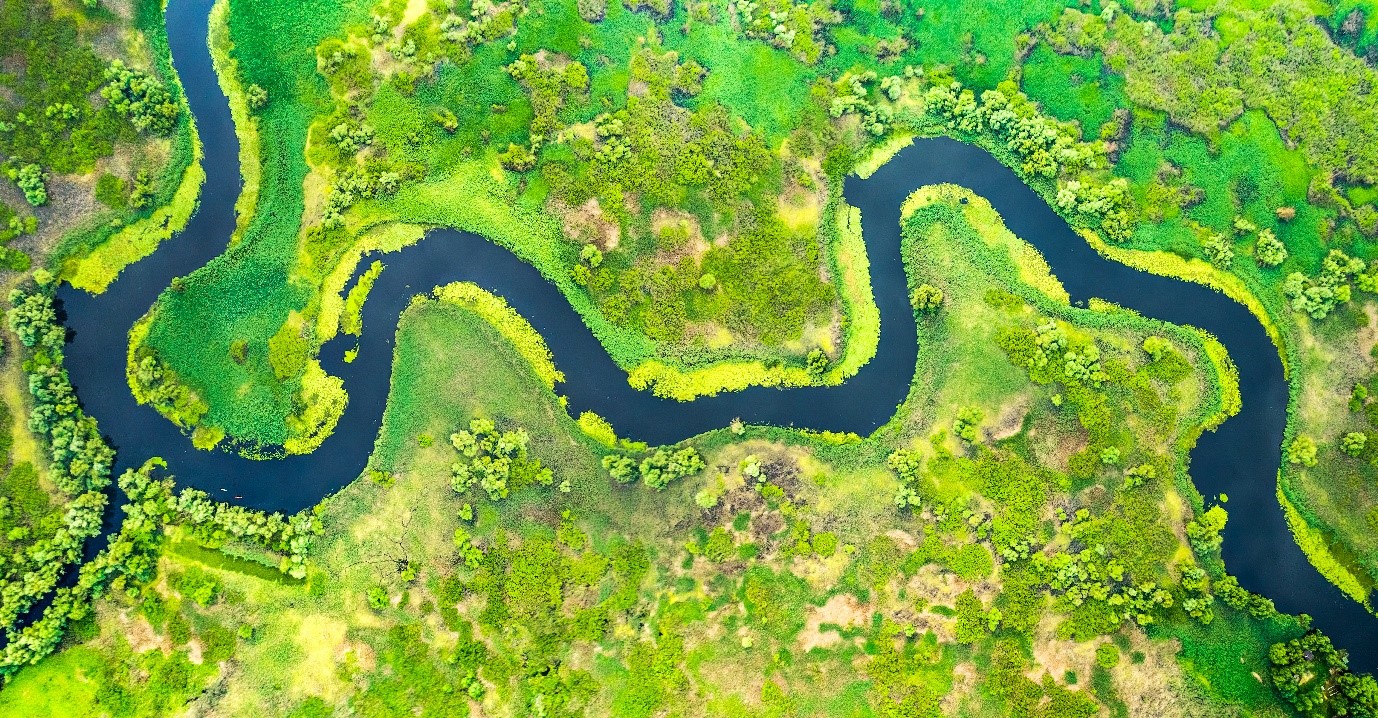Natural flood management
Natural Flood Management
Watch our video to find out more about natural flood management, also known as NFM.
Natural flood management is the utilisation of natural resources and natural elements to protect against flooding.
Natural flood management is by no means a new concept and something we, at United Utilities, have been using in the North West for a considerable period of time, helping to combat flooding and in the same breath, successfully maintain and improve water quality.
From restoring bends in riverbeds, known as river re-meandering, constructing wetlands, to planting trees and changing land management in a way that allows soils to absorb more water, there exists a variety of different natural flood management features, more of which we delve into below.
How do these actions successfully prevent flooding?
The main role of natural flood management is to either significantly enhance the water storage capabilities of the land, so as to limit runoff entering the course, or to slow down the transition of water into the watercourse, ultimately increasing the length of time between peak rainfall and peak flow.
However, natural flood management systems do not exist as the one and only solution and, in order to be truly effective in all of their duties, must be implemented alongside traditional engineering solutions, in a joined up system.
So, why do we use natural flood management?
Using a Catchment System Thinking approach that considers the need of the entire catchment, we focus our efforts on acting sustainably and employing the options that consider future needs.
Natural flood management is not only cost-effective in comparison to alternative flood prevention measures, it is also a sustainable method of managing flood risk that can create habitats for a variety of wildlife and deliver significant benefits in regard to recreation and leisure.
John Curtin, the Executive Director of Flood & Coastal Risk Management at the Environment Agency said: “I often think improving flood resilience is like a mosaic, many different pieces need to come together to complete the resilience picture. Natural flood management is an important part of that mosaic when used alongside more traditional engineering. These projects also provide fantastic opportunities for community involvement and leadership.”
The reasons stated by Curtin are why here at United Utilities we utilise natural flood management solutions when possible and have detailed plans to implement more of them in the coming years.
In the past, in order to cater to the needs of timber plantations and other commercial practices, river channels were straightened. The result of this was severe degradation of the natural character of stream and river habitats, considerably increasing flood risk.
In order to implement the most effective, appropriate solutions to managing flood risk, the source of the problem must be defined and, once an understanding of the issue has been detailed, work can begin on designing a plan appropriate of location, ecology, and geology.
Input from various different stakeholders across the catchment is essential in establishing a solution that satisfy the needs of all those who benefit from the water and, equally, the habitats which depend on it.
Restoring meanders
One such way we manage flooding in a natural fashion is through the restoration of meanders. A river meander is a series of curves and bends in a river – displayed in the image below:

River re-meandering involves the creation of a new winding course or the reconnection of cut off meanders, effectively slowing down the river flow.
In certain circumstances, where the water course had been directed in a way that bypassed the historic meanders, natural flood management in the form of restoration could be carried out, redirecting the water back to its traditional route.
A way of doing this could be removing the engineered channel allowing the river to migrate back to its natural meander. In addition introducing earth bunds speeds up this natural process by directing the flow of water and actively adjusting the route to a meander.
However, implementations such as these are not always possible and more intensive solutions are required that involve digging an entirely new course and reprofiling the river channel.
An example of this is Swindale Beck - we worked with the Environment Agency, RSPB, and Natural England to restore a section of Swindale Beck.
Restoring Swindale Beck to its more natural curving course, slowed the flow of the river creating a more suitable habitat for spawning salmon and trout. Since the work was complete in 2016, salmon have been returning year on year to spawn. Click here to find out more.
Swindale Beck
Discover by how our work to returning curves and remove deep river banks has lets the river behave more naturally. By reconnecting the watercourse to its floodplain, it allows us to keep more water in the landscape, and slows water flow downstream during storm events.
Natural flood management and CaST
So, now we’ve explained what natural flood management is, it’s worth understanding how this relates to a Catchment Systems Thinking approach. Firstly, Catchment Systems Thinking involves looking at the activities which take place within the catchment in a holistic fashion, identifying the impacts that each has on the environment, the wider community, and of course, the water.
Natural flood management involves applying the most suitable solution to the control of the flow of water possible, therefore it successfully fits into a Catchment Systems Thinking approach.